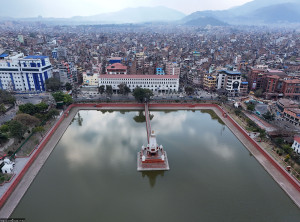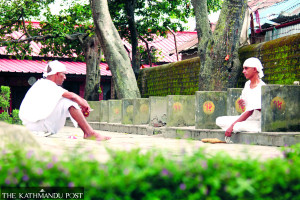Editorial
Dengue’s dangers
The government must run anti-dengue campaigns and send more medical resources to affected areas.
Mosquitoes are climbing Nepal’s hills and mountains, marking their presence in areas that were not their traditional habitats. Accordingly, the number of people infected by the mosquito-borne dengue virus is soaring. A mosquito-borne vector infection, dengue is mostly found in tropical and sub-tropical climates and is concentrated in urban and semi-urban areas. According to the World Health Organization, about half of the world’s population is at risk of dengue, and around 100-400 million infections occur each year.
Most districts of Nepal have seen a surge in dengue infections in the past couple of years, putting ill-equipped health centres, especially in the hills, which are new to dengue, under stress. Since January of this year alone, Nepal has seen over 5,000 cases and at least three deaths. In Sankhuwasabha, the district hospital is short of beds and healthcare workers. The situation there is so precarious that people have ended up on the floor, corridor, chairs, storeroom and hospital compound. This, however, is nothing new in the country—the Covid-19 pandemic exposed our inability to handle large-scale emergencies owing to a lack of infrastructure and preparedness.
The fact that a disease like dengue has reached the mountains also confirms that we are amid a major climate crisis. With the rising temperatures, mosquitoes carrying dengue have gained climate adaptive potential and thrived in colder climates—or the previously colder areas that are slowly warming up. Even though other mountain districts like Humla and Mustang haven’t reported any cases this year yet, we cannot deny the possibility. Equally concerning is the lack of community-level cleanliness, sanitation and preventive measures. Government bodies often claim they are searching and destroying the mosquito breeding grounds, but the results do not corroborate their claims.
One might wonder what the government is doing amid such a health crisis. The truth is that it is not taking this vector-borne disease seriously. Nor have there been satisfactory efforts to equip the healthcare centres struggling with less manpower, insufficient medicines and space shortages. With the changing nature of mosquitoes, it is also necessary to conduct comprehensive research to be alert in upcoming years. Notably, this year, hill districts have seen thousands of positive cases while Madhesh, the comparatively hotter region, province has reported only 77 cases. This discrepancy also should be taken into consideration.
Experts worry that the escalation of risks in those areas that aren’t traditional dengue hotspots has turned things upside down. Our infrastructures have not seen any progress for so long, but things have changed, and endemics have started emerging in new areas. But we haven’t invested in strengthening healthcare infrastructures accordingly. The time has come to heed experts’ concerns and deal with this change by allocating more budget for the health sector and upgrading their patient-accommodating capacities. In the short run, the government should conduct search and destroy programmes, cleanliness and sanitation drives, and increase the supply of medicines and human resources in affected areas. If not, these seemingly trivial mosquitoes can pose more danger in the days to come.




 20.03°C Kathmandu
20.03°C Kathmandu














